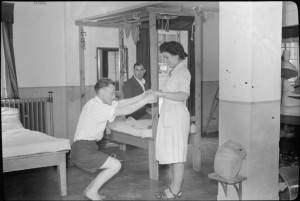 The world falls into four camps: people who have no interest in leg strength and therefore no interest in squats (you are excused), people want leg strength but fear squats because they have seen too many crippled power-lifters, and people who swear by squats and believe the risks of working them into your routine are outweighed by the benefits they provide. And, finally, our camp: those who don’t trust what they’ve been told about the risk-reward, but are tempted anyway.
The world falls into four camps: people who have no interest in leg strength and therefore no interest in squats (you are excused), people want leg strength but fear squats because they have seen too many crippled power-lifters, and people who swear by squats and believe the risks of working them into your routine are outweighed by the benefits they provide. And, finally, our camp: those who don’t trust what they’ve been told about the risk-reward, but are tempted anyway.
Google “old knees squats” and you’ll get a thumbnail sketch of the internet in all its earnest, not-thoroughly-trustworthy, information-spewing glory. There are sites that sound truly knowledgeable and professional and sites that sound like every conversation you’ve ever had in an airport bar. You hear a voice that takes you back to a bunch of teenagers in a garage, hefting homemade cement-and-rebar weights, so you’re sure this is not very substantiated–and then you find a dozen citations from what look to be academic journals.
If you have worries about squats, you’ll note the number of articles that talk about “squat myths” which says this is highly debated, with plenty of conflicting information being bandied about. And you, rookie, will have trouble separating the good info from the bad. There are also many articles that refer to problems that come from “poor technique,” which tells you that there’s a good way and a bad way to do squats…and you, rookie, should be careful.
You will also find videos, which are a mixed blessing. You can learn how to do many things watching videos online, but (a) some things are harder than others and (b) you want to learn from a video from someone who knows what he or she is talking about.
Go to Livestrong. Yes, Livestrong is operating under something of a cloud these days. A gigantic, Old Testament thunderhead. But the site does have good, clearly stated articles. If you’re thinking about adding squats to your workout, take a look at the site’s article on potential knee problems. (It won’t necessarily discourage you, but I can’t help but point out the following sentence: “Squatting can be hard on the knees even if you have good technique.”)
Photo: Rehabilitation of British Soldiers From Normandy- the work of the Robert Jones and Dame Agnes Hunt Orthopaedic Hospital, UK, 1944. “A wounded man is helped with his squatting exercises by a nurse at the the Robert Jones and Dame Agnes Hunt Orthopaedic Hospital, Oswestry. These exercises are designed to strengthen his leg muscles, which have been weakened through injury.” Via Wikimedia Commons.









